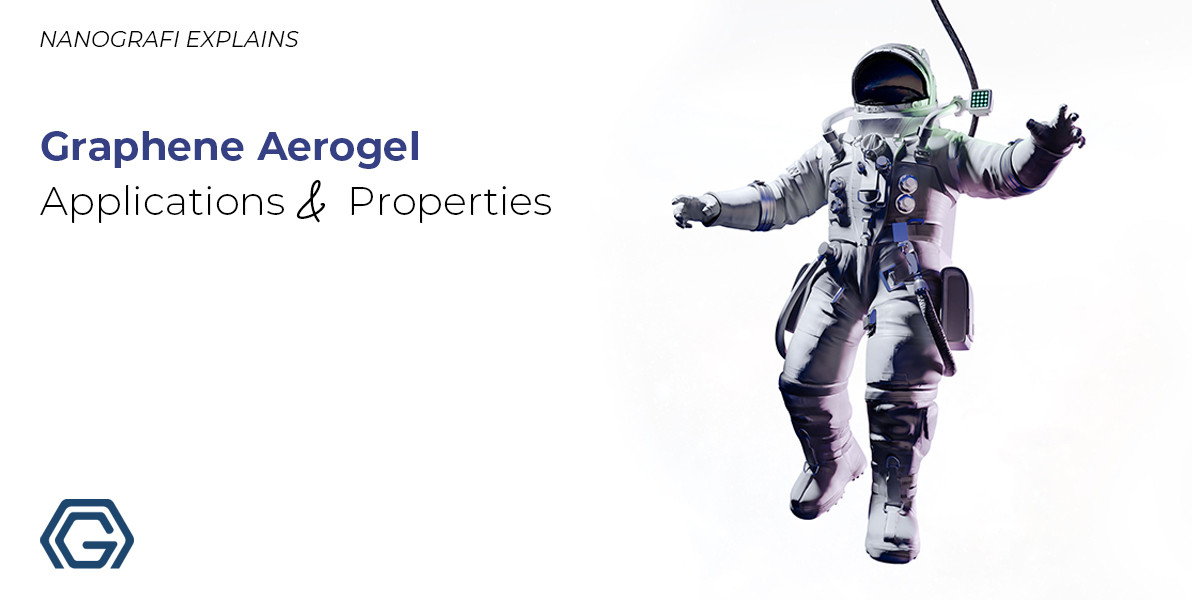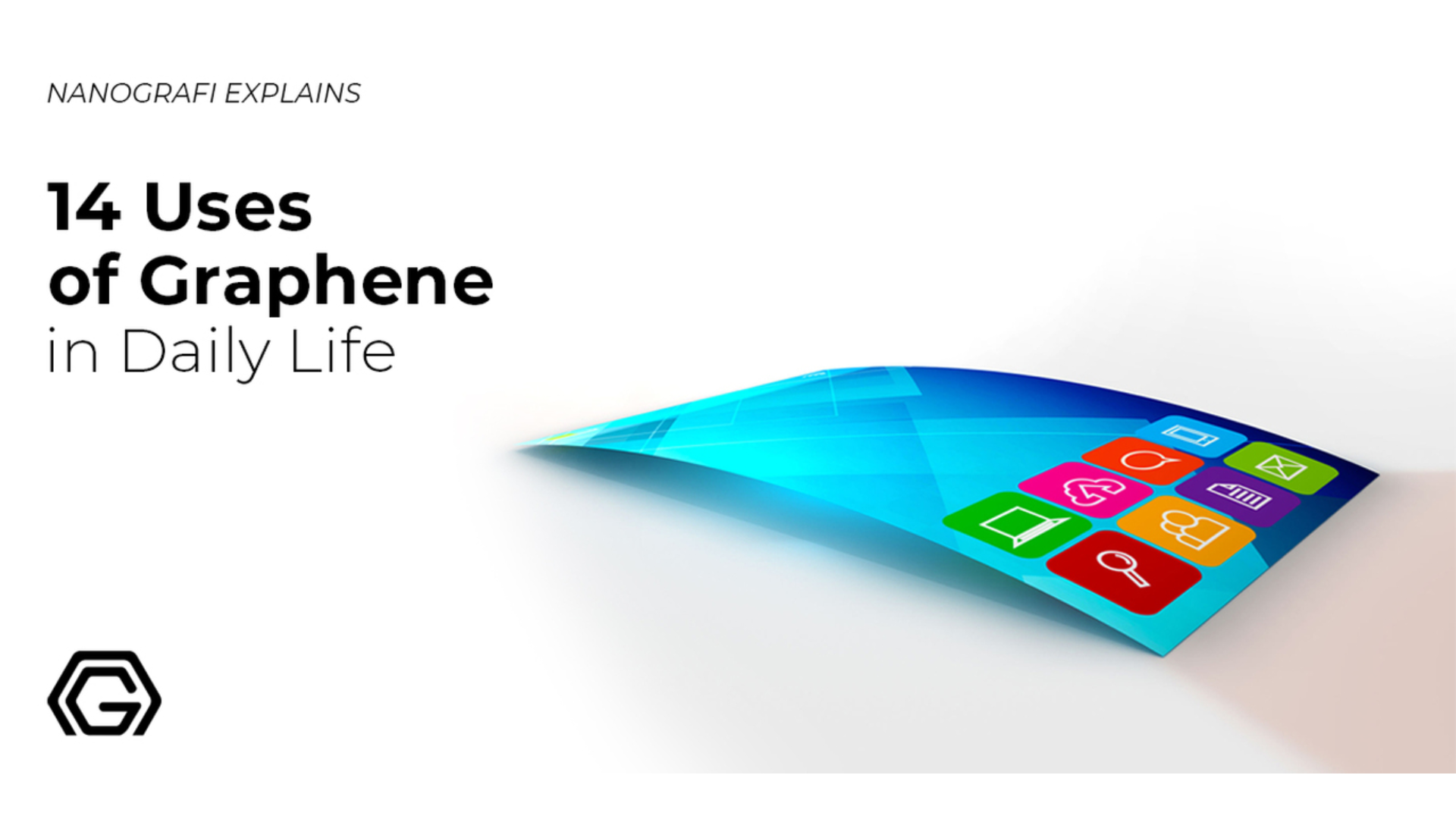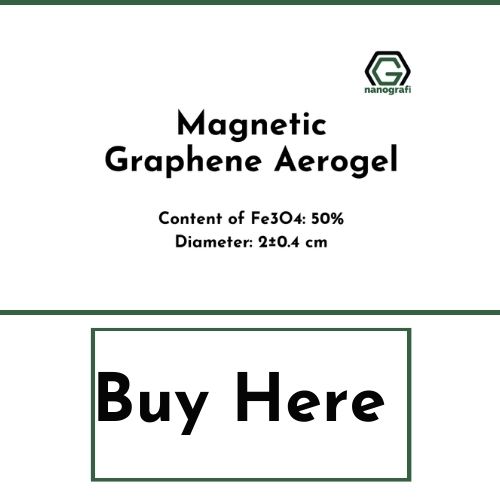Graphene Aerogel Applications and Properties
Graphene aerogel is one of the lightest materials with extraordinarily low density. It is porous and environment-friendly material with remarkable electrical conductivity, chemical inert, and high surface area.
The graphene aerogel is the most popular material nowadays that has found its uses across several industries such as supercapacitors, lithium-ion batteries, environment purposes, solar or fuel cells, etc. It is also being used at more advanced fronts. For example, NASA is using graphene aerogels for manufacturing more advanced spacesuits. Its use in the production of thermal sportswear is yet another game-changer utilization that has the potential to save wearers from hostile conditions as drastic as -321 degrees Fahrenheit. Graphene is a revolutionary material, and its aerogel form has made it more important because of some exceptional properties that make this new material find uses in applications for better electronics, capacitors, batteries, and in fact, a better future. However, the range of applications for the graphene aerogels is still under extensive research, and the most amazing graphene aerogel based gadgets are yet to come in the coming years.
Introduction
Graphene aerogels are the world's lightest 3D structures with low density and high porosity. These materials are as astonishingly lightweight as they can be placed on top of a cotton ball or on the petals of flowers. In fact, these materials are so lightweight that one gallon of water is heavier than the 150 bricks of the graphene aerogels. They are not only lightweight but also stronger than the steel despite being just 0.2% of the steel weight. These new materials have become so important that modern developments such as the manufacturing of space suits and thermal sportswear seem impossible without them.
History of Graphene Aerogels
Graphene aerogels have some remarkable properties that make this material really miraculous and revolutionary. The biggest quality of the graphene aerogel is its lightweight. It is so light that it weighs only 0.16 milligrams per cubic centimeter. It has surprisingly as low density as it equals twice the size of hydrogen and lower than helium. It is also popular for exceptional elasticity and its ability to absorb organics.
Graphene aerogels are synthetic materials with low density and high porosity. Its synthesis involves the reducing precursor graphene oxide solution to get graphene hydrogel. Freeze-drying is then used to remove the solvent and to replace it with air. The resulting structure is the graphene aerogel that consists of a network of graphene sheets bonded to each other with covalent bonds and pockets of air in between those layers making its density as low as 3 mg per cubic centimeter.
Graphene aerogels having elasticity, lightweight, and robust mechanical properties has become the most popular modern material. It is being used in several applications across several industries, such as supercapacitors, space technologies, etc. However, the range of applications for graphene aerogels is still under extensive research.
Although the occasional efforts to study graphene trace back to 1859, significant research on the material started in 2004 when the two professors of the University of Manchester, Professor Sir Andre Geim and Professor Sir Kostya Novoselov, discovered and isolated a single layer of the carbon for the very first time in the history of science. Both of the professors received the Nobel Prize in Physics for their achievements.
After the discovery of a single layer of carbon, this area of research grew so quickly that now hundreds of laboratories all across the globe are researching on the different aspects of graphene. The graphene aerogels are the most modern developments in this field. A scientist Gao Chao and his team first time discovered the graphene aerogels at Zhejiang University. They have already developed macroscopic materials made from the graphene. However, these materials were mainly one-dimensional and two-dimensional. The graphene aerogels are, on the other hand, a three-dimensional structure. Hence, after the considerable efforts commitment, and perseverance of the researchers and scientists have found 3D graphene aerogels that are one of the lightest known materials on earth.
Properties of Graphene Aerogels
Graphene aerogels exhibit some exceptional properties that cannot be expected from any other types of solid materials.
- Graphene aerogels consist of carbon atoms, bonded together with covalent bonds, formed into thin sheets of just one atom thickness.
- Graphene aerogels are extremely lightweight materials that are seven times lighter than air and 12% lighter than the aerographite (the previous record holder for being the lightest material). In more simple words, one cubic centimeter of the graphene aerogels weighs just 0.16 milligram.
- Graphene aerogels have a self-supported three-dimensional nanoporous honeycomb-like structure with a high surface area.
- Graphene aerogels are the great insolating materials as well. A thick slab of graphene aerogel is believed to insulate against the blue flame of a Bunsen burner.
- Graphene aerogels are materials with very high physical and chemical stability.
- Graphene aerogels have 50 MPa values of Young's modulus that means it is highly elastic and can easily retain its original form even after 90% compression.
- Graphene aerogels have the lowest density, with 12.5 milligrams per cubic centimeter. It means it has a low density as it equals twice the size of hydrogen and lower than helium.
- Graphene aerogels are also stronger than the steel despite being just 0.2% of the steel weight.
- The remarkable low density of the graphene aerogels also makes them very absorbent. According to an estimate, it has the capacity to absorb more than 850 times of its own weigh
To get more information about the uses of graphene,
you can read our blog post here.
Applications of Graphene Aerogels
Graphene is a phenomenally super-strong material that also has other exceptional qualities as well. This wonderful material has led to a number of great technological innovations. Graphene aerogels have a high strength to weight ratio that makes it ideal for various types of applications ranging from desalination filters to fast-charging batteries and even advanced next-generation LED bulbs. However, it is just a start, and the most amazing graphene aerogel based gadgets are yet to come in the coming years. The following are some applications that are taking full advantage of this astonishing new material.
- Graphene aerogels are used to produce space suits, and NASA is pioneering in this regard, which is using graphene aerogels for manufacturing the more advanced spacesuits.
- Graphene aerogels use in the production of thermal sportswear is yet another game-changer utilization that has the potential to save wearers from hostile conditions as drastic as -321 degrees Fahrenheit.
- Graphene aerogels have now found extensive use in the manufacturing of super-fast charging batteries. Modern batteries with graphene supercapacitors are super batteries that do not lose performance even after extensive use. Moreover, the charging rate of those batteries is also astonishingly high.
- Research is also going on to produce graphene aerogel based energy storage devices that will one day replace the lithium-ion batteries in electronic devices like smartphones, laptops, etc. and even in electric cars. Such energy storage devices will be more efficient in respect of charging rates, lifespan, and environmental impacts.
- Graphene aerogels are also considered to be the future of LED bulbs because the Universe of Manchester's research team has created a dimmable filament-shaped LED bulb coated in graphene that has reduced the energy requirement by 10%.
- Research has also proved that the graphene aerogels can be used as a cell growth promotor and an absorbent for the removal of histamine (a food toxicant) efficiently from the real food matrix.
- Graphene aerogels are great absorbents that mean it can be used for environmental clean up like oil spills. It has the capacity to hold 1000x its weight in liquid because of the high degree of recoverable compressibility and overall hardness of the structure. Graphene aerogels are also suitable to clean dust from the tails of comets.
- Graphene aerogels are a wonderful source for efficient energy storage and conversion because of porous hierarchical structures that are able to afford rapid electron/ion transport, good cycle performance, and high physical and chemical stability.
- Graphene aerogels are also being used in 3D printing methods that give a 3D graphene aerogel that can maintain its shape on room temperature.
- Graphene aerogels are being used to produce desalination filters. Those atom-thick filters have the potential to reduce the amount of energy required for turning the saltwater into clean drinkable water. The filter holes of just 100 nanometers in diameters are just enough for the water molecules to squeeze through without excess pressure but, at the same time, too tiny for the salt particles to pass through. Such desalination filters reduce the required amount of energy by approximately 20%. Hence, those filters are more environment-friendly and better suits those areas where electricity is as scarce as the drinkable clean water.
- Graphene aerogels are believed to have the potential to replace flight balloons because of their high porosity and low density.
Conclusion
Graphene aerogels are the world's lightest solid materials. Although graphene has been a topic of research since 1859, it was only after 2004 that the research caught the momentum, and as a result, we now have an astonishing product, graphene aerogel. It is produced by combining a polymer with a solvent, and then the solvent is replaced by a gas usually air (99.98% by volume). Such a large proportion of air makes it the lightest material. It is as lightweight that it can be balanced on a blade of grass or petals of a flower. Aerogels can be prepared from a wide variety of chemical compounds, and they are very diverse materials with a lot of unique properties. They have low density, high porosity, and low thermal conductivity. These remarkable qualities have allowed the aerogel to find uses in various applications across several industries. The graphene aerogel is most popular material nowadays that has found its uses across several industries such as supercapacitors, lithium-ion batteries, environment purposes, solar or fuel cells, energy-saving materials, sustainable products for buildings, clothing, outdoor and sports gear, architectural lighting panels, thermal break and condensation control, optics, imaging devices, corrosion prevention under insulation, high performing additives to coatings, etc. It is also being used at more advanced fronts. For example, NASA is using graphene aerogels for manufacturing the more advanced spacesuits. Its use in the production of thermal sportswear is yet another game-changer utilization that has the potential to save wearers from hostile conditions as drastic as -321 degrees Fahrenheit. However, the range of applications for the graphene aerogels is still under extensive research, and the most amazing graphene aerogel based gadgets are yet to come in the coming years.
To get more information, you can visit Blografi.
References
https://pubs.rsc.org/en/content/articlelanding/2018/ee/c7ee03031b#!divAbstract
https://www.engadget.com/2016-10-29-six-amazing-uses-for-the-wonder-material-graphene.html
https://en.wikipedia.org/wiki/Aerographene
https://www.graphene-info.com/graphene-aerogel
https://www.extremetech.com/extreme/153063-graphene-aerogel-is-seven-times-lighter-than-air-can-balance-on-a-blade-of-grass
https://www.nanowerk.com/spotlight/spotid=52741.php
https://www.sciencedirect.com/science/article/pii/B9780128145487000088
Recent Posts
-
Nanocomposites in Food Packaging
The utilization of nanocomposites in food packaging represents a significant advancement in the fiel …19th Apr 2024 -
What is the Difference Between 7075 and 6061 Aluminum Alloy?
When comparing 7075 aluminum alloy to 6061 aluminum alloy, it's essential to understand their disti …5th Apr 2024 -
Iron-Air Batteries: The Ultimate Guide
Iron-air batteries represent a significant breakthrough in energy storage technology, offering a sus …29th Mar 2024







